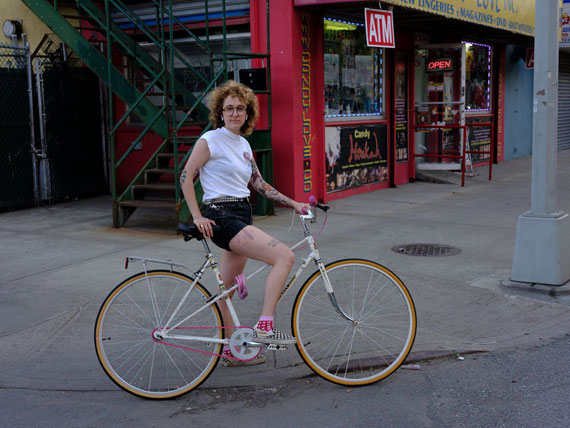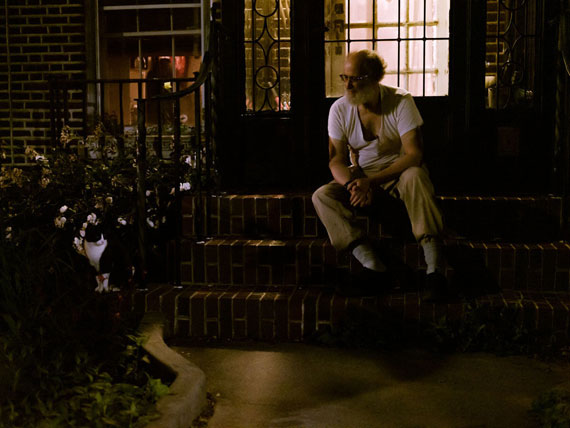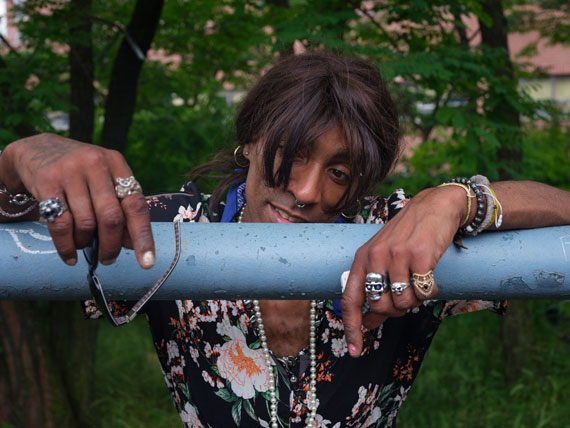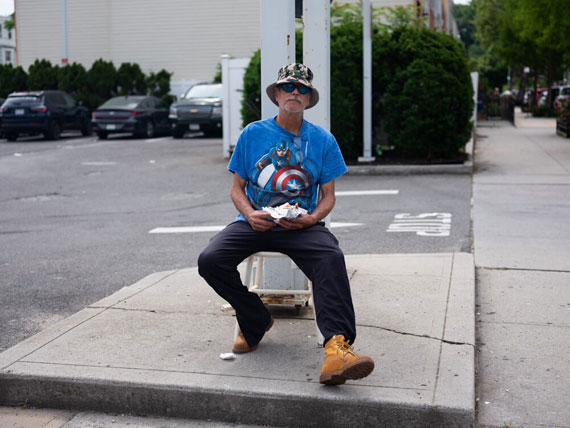Whether you are already an avid street photographer or if you get too nervous by the thought of it, I highly suggest giving street portraits a try.
While street portraits are technically not candid photography, they are a huge part of the world of street photography and can give your work a lot of added depth.
You can tell the story of a person or place just as much, if not more than with pure candid photography and it is a fantastic way to practice your portraiture in general.
So here are some tips on how to approach street portraits.
What’s the Point?
A camera is just a tool, but it’s a fantastic tool that can give you an excuse to make new connections.
In photography, we’re in the business of making connections, with our subjects, with the viewers of our work, with ourselves.
And not much feels better then when you get to brighten a person’s day, and your own, by stopping to talk to them and take their photo.
You can often capture a depth and emotion that can be much tougher to come across with pure candid street photography. And both styles can be brought together to create a well-rounded body of work.
Get Comfortable:
If you’re not a pure extrovert, stopping someone to ask for their portrait can feel daunting at first.
But honestly, it’s easy to do once you get used to it.
Yes, people will say no, but they usually do it nicely. It’s never a big deal and you can just move on to the next person. These days, when someone says no, I still feel good about it since I at least dared to ask.
And really, most people say yes. It’s important to realize that you are usually brightening someone’s day by taking an interest in them.
To get comfortable, think about what you will say to people ahead of time. It’s often as simple as saying, ‘Hey, do you mind if I take your picture? I’m a photographer and this would make a great photo.’
Take a Deep Breath:
You got up the courage to ask, and they said yes!
Your heart might be pounding, you might be so caught up in the moment, that it’s so common to just speed through a quick portrait and move on. It’s common to feel like you have to move fast so you don’t bother the person.
While sometimes you certainly do need to move fast, other times you will want to slow down and take some time. You owe them a good portrait.
Keep in mind that it’s usually the photographer who breaks off the portrait before the subject.
So after they say yes, take a deep breath, think about what you want to say to them, look at the background, and check your settings. Your mind will be racing, but knowing that you have a little time to think about this stuff will hopefully slow you down so you can take a good portrait.
Choose the Right Focal Length:
While my favorite street photography lenses are 35mm and 50mm, I typically use 50mm for my street portraits.
35mm will work, especially if you want to show a lot of the background, but it can often be too wide for some portraits where you want to fill the frame with the subject. Similarly, 85mm is fantastic for tight portraits but can be too constricting when you want to show more background and context.
That’s why I love to use the 50mm. It’s wide enough to allow you to include a lot of background when you want to but tight enough to focus in on the subject when you need to. The lens gives you a lot of flexibility – all you need to do is move your feet.
Work the Background:
When you are starting to put together your portrait, you want to first think about your background.
First, do you want to capture some of the background with the subject or would you rather a closeup?
I often take both so I have the choice later. I start back, capturing some photos with the background and then get a little closer and closer as I move on. This has the added effect of not making them too uncomfortable at the beginning with you immediately sticking a camera up close in their face.
Where is the light hitting the background and your subject? Are there interesting details or colors that will help to tell the story or just make the photo more beautiful?
And don’t be afraid to ask your subject to stand in a certain place or to stand in a certain way. Sometimes they’ll be in a perfect position right away and you just want to take the photo before they move, but other times they’ll need a little guidance and help.
Work With and Talk to Your Subjects:
The whole point of this is to create connections with people. If you approach your portraits from this angle, the photographs will turn out better because your subjects will have a more interesting experience and will be more open in front of the camera.
Talk to them, ask them questions, get them talking. Find something in common or ask an interesting or tough question about their lives.
People want to talk about themselves and the more you show interest the more fun they will have.
The goal is to make the session feel like the camera is almost not there – that they are having an interesting time with you and you’re taking some pictures along the way.
This type of photography often gets compared to walking a tightrope. You’re working to engage the subject and get them in the right mood while not ruining the moment with your camera.
Another important tip is to let them know that you want them to look natural. Often people will pose too much or become stiff when you put the camera up. Telling them that you want a natural looking portrait will allow them to relax a little bit and understand more about what you are looking for.
What Makes a Person Special?
This is the ultimate question, and the better you become at figuring this out, the better your street portraits will get.
I believe that emotion and openness are the keys to a person taking a great street portrait. It doesn’t matter how flashy or well-dressed they are. You can have a flashy person who’s open or you can have a flashy person who’s boring in front of the camera. Similarly, you can have an everyday person who will light up the camera in ways you did not expect.
It all depends on the person, and over time your instincts will get better at picking them out.
So give it a go. The connections you create will be amazing, the stories you hear will be invigorating, and the photographs that come from this process will be fascinating.
And you will find your skills at portraiture, in general, will grow by leaps and bounds.
About the Author:
James Maher is the author of Essentials of Street Photography, which covers everything about the genre even down to specific post processing techniques that can bring the best out of street scenes.
Like This Article?
Don't Miss The Next One!
Join over 100,000 photographers of all experience levels who receive our free photography tips and articles to stay current:










I love these photos and do a lot of them when I travel. People generally love to be photographed. But I am curious about the legalities of it. Do I need a model release? In many cases, the person is outside the U.S. and does not read or speak English so getting a signed form can be a problem. How do you handle this? If I want to print and sell prints of the photo, or put it on a site like Shutterstock, do I need a release?